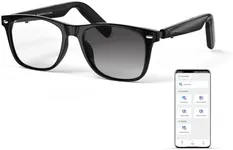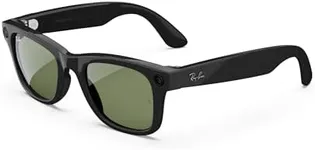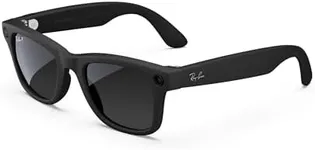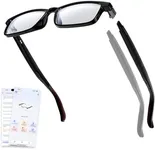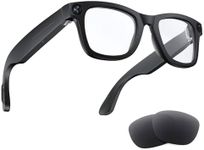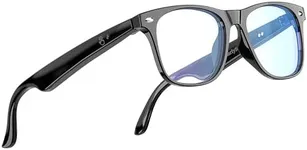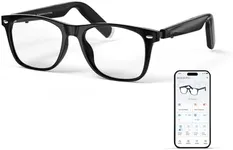Buying Guide for the Best Smart Glasses
Smart glasses are a cutting-edge technology that combines the functionality of a smartphone with the convenience of eyewear. They can provide augmented reality experiences, hands-free access to information, and even health tracking. When choosing the right pair of smart glasses, it's important to consider several key specifications to ensure they meet your needs and preferences.Display TypeThe display type in smart glasses determines how information is presented to you. This can range from simple heads-up displays (HUD) to more advanced augmented reality (AR) overlays. HUDs are great for basic notifications and navigation, while AR displays can provide immersive experiences by overlaying digital information onto the real world. If you need smart glasses for simple tasks like notifications and directions, a basic HUD might suffice. For more interactive and immersive applications, such as gaming or professional use, AR displays are the better choice.
Battery LifeBattery life is crucial for smart glasses, as it determines how long you can use them before needing to recharge. Battery life can vary widely, from a few hours to a full day of use. If you plan to use your smart glasses for extended periods, such as during a workday or for long outdoor activities, look for models with longer battery life. For occasional use, shorter battery life may be acceptable. Consider your daily routine and how often you will have the opportunity to recharge your glasses.
ConnectivityConnectivity options in smart glasses include Bluetooth, Wi-Fi, and sometimes cellular capabilities. Bluetooth is essential for pairing with your smartphone or other devices, while Wi-Fi allows for direct internet access. Some advanced models may also offer cellular connectivity for independent use without a smartphone. If you need constant internet access or plan to use your smart glasses independently, look for models with Wi-Fi or cellular capabilities. For basic use, Bluetooth connectivity may be sufficient.
Camera QualityThe camera quality in smart glasses can vary from basic to high-definition. A higher quality camera allows for better photos and videos, which can be important for capturing moments or for professional use. If you plan to use your smart glasses for photography, video recording, or augmented reality applications, look for models with higher resolution cameras. For simple tasks like video calls or basic snapshots, a lower resolution camera may be adequate.
Comfort and FitComfort and fit are essential for any wearable device, especially smart glasses that you may wear for extended periods. Consider the weight, adjustability, and materials used in the glasses. Lightweight and adjustable frames are more comfortable for long-term wear. If you wear prescription glasses, look for smart glasses that can accommodate your lenses or offer prescription options. Trying on different models, if possible, can help you find the most comfortable fit for your needs.
Audio QualityAudio quality in smart glasses is important for making calls, listening to music, or receiving notifications. Some smart glasses have built-in speakers, while others use bone conduction technology to transmit sound. High-quality audio is essential if you plan to use your smart glasses for media consumption or frequent phone calls. If audio is less critical for your use case, you may prioritize other features over audio quality.
Durability and Water ResistanceDurability and water resistance are important factors, especially if you plan to use your smart glasses in various environments. Look for models with robust build quality and water resistance ratings if you expect to use them outdoors or in potentially wet conditions. Higher durability ensures that your investment will last longer, while water resistance provides peace of mind during activities like running or cycling in the rain.
